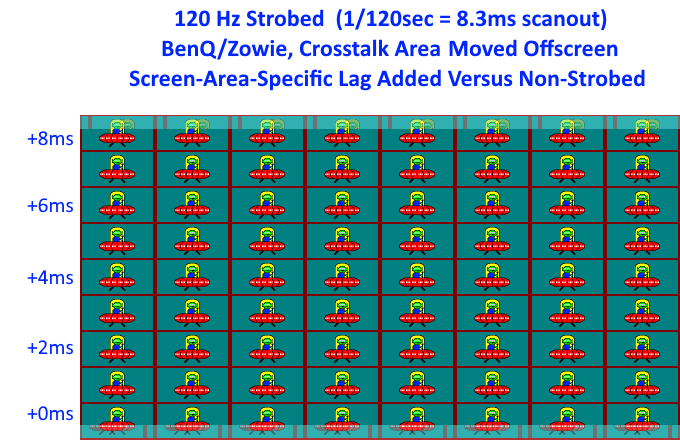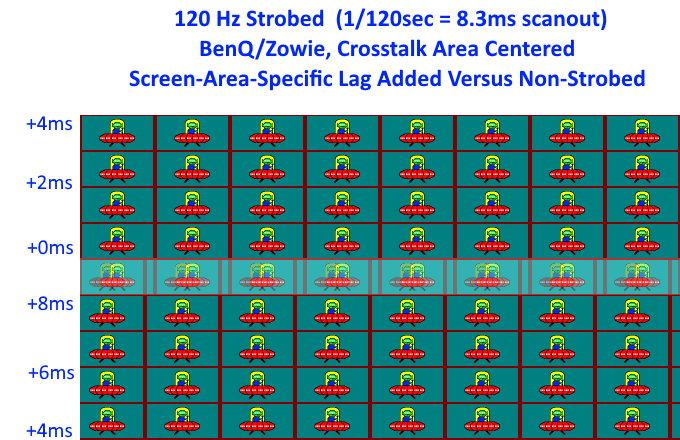Mathematically, all strobe backlights create an average of up to half-Hz latency, due to the time-differential between sequential scanout (
high speed videos) that is done in the dark unseen by human eyes, before the strobe backlight flash.
Remember, not all pixels refresh at the same time. So that creates some different latency effects for different pixels, when a global strobe flash is used on a sequential-refreshed LCD panel. Some pixels have no latency penalty, while other pixels have some latency penalty. Overall, the average latency penalty (of all pixels averaged) is typically approximately half a refresh cycle, for a short-puslewidth strobe backlight. So it's a 2ms latency penalty average for a 240Hz strobe backlight.
Both DyAc and PureXP has pretty much exactly the same latency-offseting behavior -- the area above the crosstalk zone has no lag adder, and the area below the crosstalk zone has a minor lag adder.
For back in the 120Hz era (1/120sec = 8ms), here's some old diagrams.


Other variables like LCD GtG and strobe pulse width, does affect the math slightly, but this is the
I am pretty sure my writings may not translate correctly.
But the most important answer is that the latency penalty is identical for both DyAc and PureXP (relative to non-DyAc and non-PureXP respectively).
But remember, the HUMAN is also part of the input lag chain. The human is not part of display-only latency benchmarks.

There are times where the competitive advantages of a strobe backlight (
for certain types of games, sometimes moreso in other games than CS:GO) reduces human reaction time MORE than the latency penalty of the strobe backlight.
So remember, always, that strobe backlights in esports (e.g. DyAc and PureXP) are used as a tool to reduce human reaction time (aka human lag) -- e.g. more easily able to see camouflaged objects in motion blur. You may find, however, strobe backlights in FPS work better for arena-style gaming (where you are continually turning/moving fast) rather than classic CS:GO style gaming. You may also find it useful to help keep your eyes better on the ball in Rocket League, and you may find use in aim-stabilizing, and you may find use in high-speed flyby attacks, etc.
Then again, you may find that DyAc/PureXP it may not help as much if you only keep your eyes stationary only on the crosshairs (e.g. camping as a sniper). Strobing is more common as percentage of esprots players in some games (e.g. Rainbow Six) than in other games (e.g. CS:GO), because of different gaming benefits from strobing.


